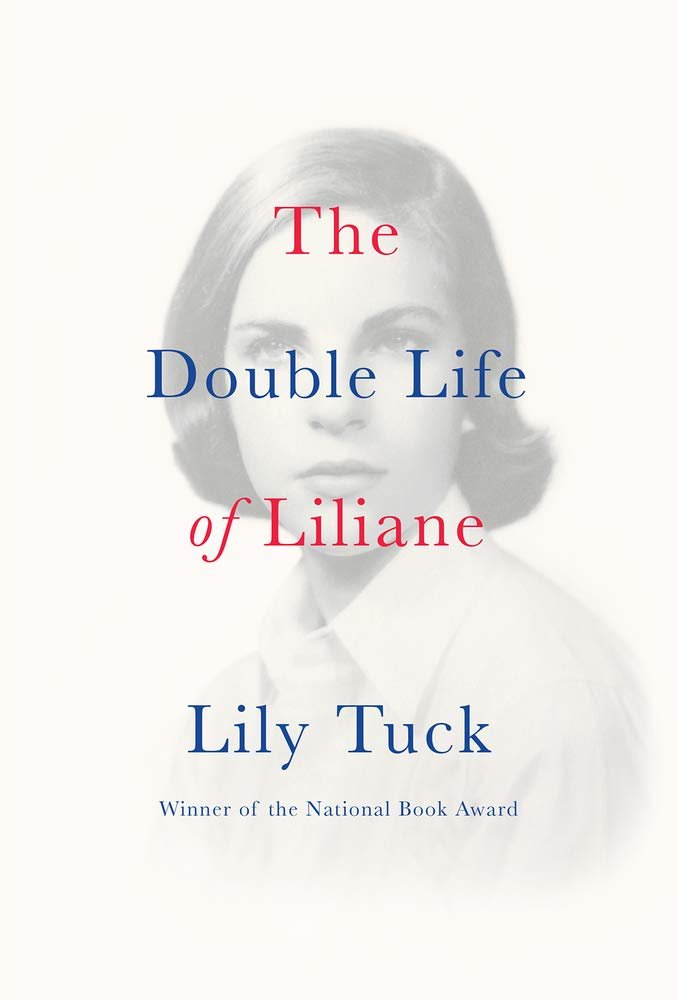Book Review: The Double Life of Liliane
/The Double Life of Liliane
by Lily Tuck
The Atlantic Monthly Press, 2015
Diane Johnson, in her blurb for Lily Tuck's new book The Double Life of Liliane, calls it “a brilliant blend of fact and fiction,” and the book's dust jacket description refers to it as (terrifying to think of the term becoming commonplace) “autofiction,” meaning, one parses, a blend of autobiography and fiction. Tuck is a National Book Award-winner who's written five novels, so readers seeing that freak-word “autofiction” will naturally assume that so practiced an author will be aware of the fact that not one reader in ten thousand is going to know anything about her own personal life.
No such luck. The Double Life of Liliane recounts the childhood and young adulthood of a girl named Liliane, the daughter of a German movie producer and an American mother in New York, and the story is full of aunts and uncles and grandmothers and childhood experiences artlessly narrated, and you won't be a dozen pages into it before you encounter a carefully-related anecdote, notice that it's simply plopped there with no connection to anything before or after it, and wonder what the hell it's doing there. To take one example out of hundreds, there's the moment when young aspiring writer Liliane encounters a man in the dining car of a train. He's obviously a writer, and he gives her a slip of paper with his name and contact information, telling her to send him something she's written:
When Liliane shows her grandmother the piece of paper with the name and address of the man she met on the train, her grandmother takes the piece of paper from Liliane and, without looking at it, rips it in half and throws it into a trash can.
That's it. No reason why. No comments, either at the moment or later. No reaction from Liliane. No resentment on either her part or her grandmother's. No recurrence of professional discouragement. No previous thread of professional discouragement. No allusion to the moment ever again. No explanation for why the words “Liliane” and “grandmother” are repeated ten spaces after their first appearance in a scene involving nobody else. Absolutely no point whatsoever to the anecdote except for the point that's governed every tedious family gathering for the last two hundred thousand years: it really happened that way.
Poor little Liliane is an inhibited child, self-conscious of her father's foreign origin and her own halting semi-familiarity with the English language:
In school, her first year, until she can manage a perfect English sentence, Liliane does not once open her mouth to speak. She is in third grade and the class is studying the Egyptians – that much Liliane can tell because student drawings of pyramids, Egyptian gods and goddesses, and hieroglyphs are pasted on the walls of the classroom. The teacher, too, ignores her.
That's it. No elaboration on what it means to Liliane. No elaboration on the fact that Liliane knows the class is studying the Egyptians because of the wall-hangings. We're told she's refraining from speaking because she's waiting until she can form a perfect sentence in English, but the plodding inclusion of her detective work implies that she can't even understand English, let alone speak it. And no mention anywhere in the anecdote of other people ignoring her, so why mention that the teacher “too” ignores her? Why? Again, those tedious family gatherings will give you your answer: not just because it really happened that way but also its inevitable sequel, Oh, I forgot to mention …
The book is filled with black-and-white old photos of anonymous people standing around in various period costumes. They would be pointed to, identified, and argued over if they were appearing in stiff old family album some unlucky guest was being marched through at one of those family gatherings, but the writing in The Double Life of Liliane is so utterly drab and lifeless – because it really happened that way, you see – that there's no chance any reader not already familiar with the last two generations of Lily Tuck's family will be able to link any of the people in the photographs to any of the people in her narrative, and no chance they'll care enough to try.
The writing is also often simply inept, in a way that ought to embarrass the National Book Award even if it doesn't embarrass our apparently lost-in-narcissism author. At one point late in the book when Liliane is attending Harvard, for example, the Revolutionary War makes an indecent gesture at her, I think: “Once as she walks through the Cambridge Common to her class, a man sitting on a bench next to the commemorative plaque that marks the spot where George Washington is said to have stood when he first took command of the Continental Army during the Revolutionary War exposes himself to her.”
The book reminded me of a story. During the famous Hurricane of 1938, my grandfather put on his hat and went out to mail a letter at the corner post box … and just when he reached it, it blew away!
That's it. No point. No follow-up. I'm just staring at you now, with a stubbornly expectant look on my face. It blew away! It really happened that way.
“I draw from life,” Frances Trollope is once said to have remarked, “but I always pulp my acquaintance before serving them up. You would never recognize a pig in a sausage.” The Double Life of Liliane is all pigs and no sausage.

